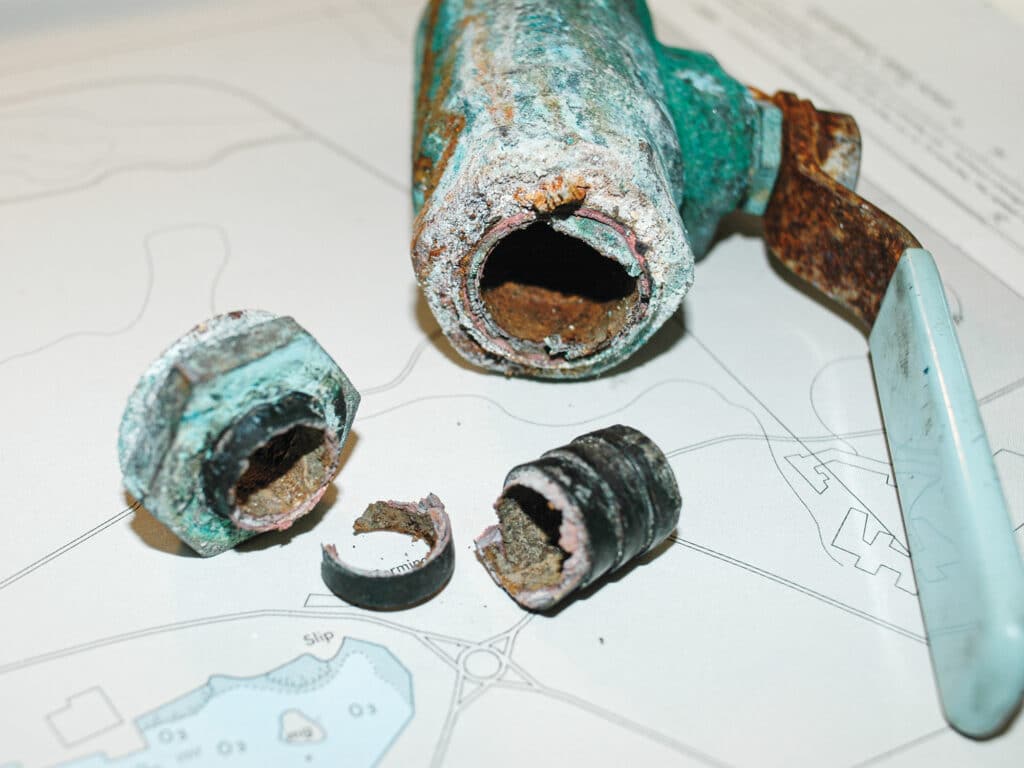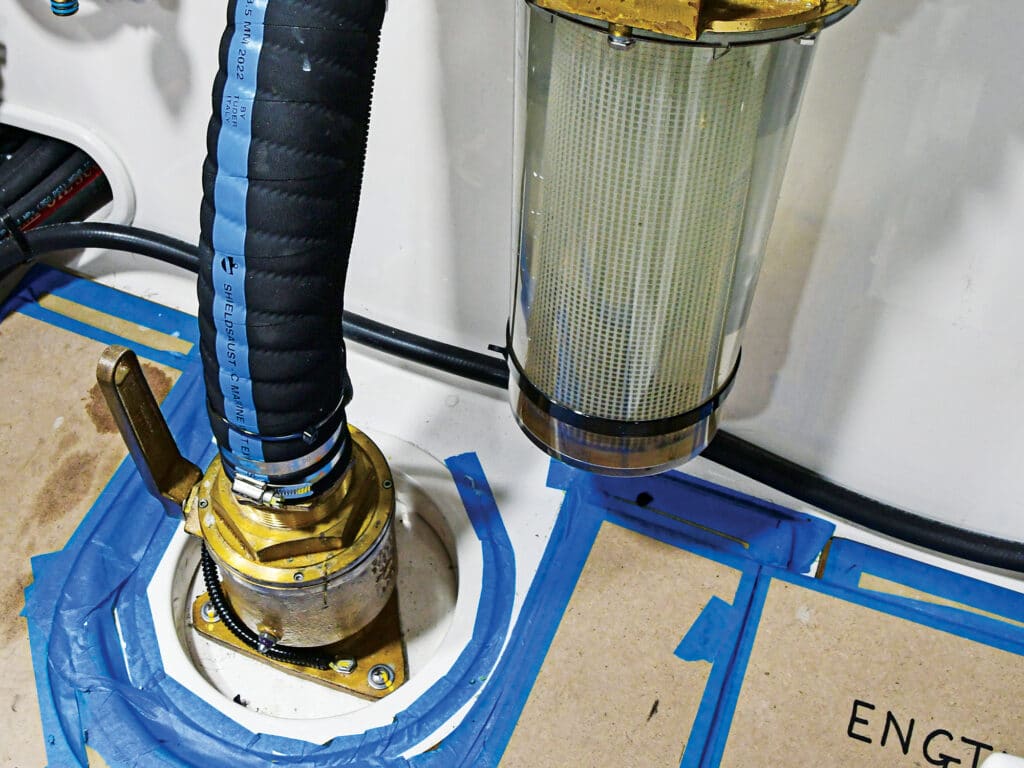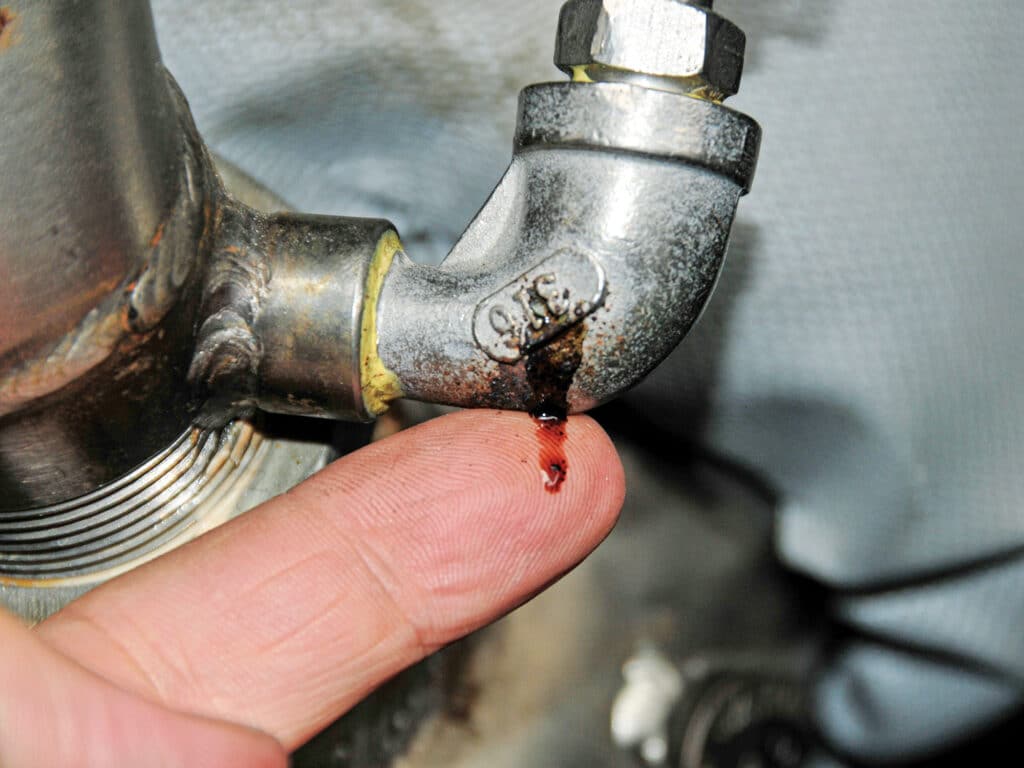
I routinely encounter defects related to design, materials and assembly in raw-water plumbing systems on cruising vessels. These defects could, and sometimes do, lead to flooding and the total loss of vessels. Here’s a look at the three most common examples of these defects.
The Un-Seacock
Seacocks let crew stem water flow quickly and easily, either for routine service or in the event of a failed hose or fitting or other raw-water emergency. These valves must be readily accessibleand able to operate with relative ease. “Readily accessible” means no tools are needed to access a seacock, nor should a significant quantity of gear need to be moved.
One of the most common of seacock errors involves mismatched threads. Through-hull fittings, sometimes called “skin” fittings, are nearly always made using parallel, straight or NPS threads, while most inline ball valves use tapered or NPT threads. The two are wholly incompatible, and yet I encounter this dangerous assembly practice on a regular basis, on new and old vessels alike. The mismatch leads to a scant two or three threads of engagement compared with a proper seacock with matching threads, which yields eight to 10 turns.
Underrated Hose

The average cruising vessel might use more than a half-dozen types of hose, from fuel and waste to potable-water exhaust. Hose used for raw water, especially below the waterline, should be specifically designed for the application.
The most common rated raw-water hose carries an SAE J2006 rating (it’s usually a black composition called EPDM, although it can be red or blue silicone). This type of hose is suited for marine wet-exhaust systems. It’s robust.
With few exceptions, what’s typically not suited for raw water is most clear PVC hose, even if it’s reinforced with nylon filament or spiral (some of these are designed for the food-service industry).
When I confront builders and yards with clearly noncompliant hose, they frequently ask me, “What makes this hose a problem?” My response is simple: “Is this hose approved for an application where if it fails, a vessel could sink?”
Furthermore, if the hose easily crushes or kinks, especially when it’s warm, then it’s not suitable for raw water, and it’s especially ill-suited for intake or suction applications.
Wrong Alloy
Only a handful of metal alloys are suited for raw-water plumbing use. Bronze, which is made primarily from copper, tin and, usually, traces of silicon and other metals, is highly corrosion-resistant for raw-water applications. However, there’s bronze, and then there’s bronze.
Manganese bronze and Tobin bronze, for instance, can include an appreciable quantity of zinc, technically placing them in the brass family. This makes them entirely unsuitable for raw-water plumbing. Any copper alloy that contains more than 15 percent zinc is technically brass and therefore should not be used for raw-water plumbing.
Using high zinc-bearing alloys often leads to dezincification, in which zinc corrodes from the alloy, leaving behind a porous, weakened structure with a telltale pinkish hue.

Some builders use brass through-hulls and seacocks, with the caveat that they must be bonded and cathodically protected with anodes. This approach is flawed and has led to flooding and vessel loss. Forgetting to replace a zinc should not lead to seacock failure. Barring stray-current corrosion, seacocks, through-hull fittings and other metallic raw-water plumbing should last the life of the vessel. Stainless steel, even 316, while corrosion-resistant, does not possess the level of corrosion resistance of bronze. This does not prohibit the use of stainless steel for this application, but it is a clear second choice to bronze.
A nonmetallic option such as glass-reinforced nylon for seacocks and through-hulls, which complies with American Boat and Yacht Council standards, is also an acceptable alternative.
Steve D’Antonio offers services for boat owners and buyers through Steve D’Antonio Marine Consulting.








